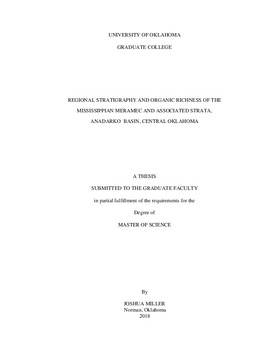| dc.description.abstract | The Mississippian Meramec Series and laterally equivalent units of the Caney and Sycamore formations of central and south-central Oklahoma generally consist of a succession of interbedded quartz-rich calcareous siltstones, argillaceous siltstones, and organic-rich mudstones that form premier unconventional reservoirs. Core, well-log, and outcrop data are integrated to develop a regional stratigraphic framework, characterize the depositional environments, and map the distribution of organic-rich facies.
The Meramec can be divided into seven sequence-stratigraphic zones deposited in shallowing upward cycles that are commonly capped by marine-flooding surfaces. The Meramec is believed to represent silt deposited in lower shoreface to offshore depositional environments within or below storm wave base and reworked by a variety of processes including tides, storms, and bottom currents. The Sycamore Formation is divided into 6 zones and was deposited downdip of the Meramec ramp facies predominately by turbidite flows. Surface to subsurface correlation demonstrates the uppermost Sycamore Formation in the Arbuckle Mountains near Springer, Oklahoma, is correlative with the lowermost Meramec in Blaine County, and the upper Meramec is correlative with the “Ahloso Member” of the lower Caney Formation.
Three-dimensional shale volume and porosity models show the stratigraphic control on petrophysical properties within the Meramec. Transgressive zones are richer in shale and exhibit higher porosity than regressive zones. Δlog R-derived estimates of total organic carbon (TOC) content (wt %) show a basinward increase in TOC to the southeast. TOC values north of the border between Canadian and Grady counties are typically <1%. TOC values to the south range from 0 to 8% with source-rock thickness as high as 167 ft (51 m) using a >3% cutoff. Discrete source beds observed in the up-dip ramp setting correlate with flooding surfaces of the Meramec sequence-stratigraphic framework. | en_US |
